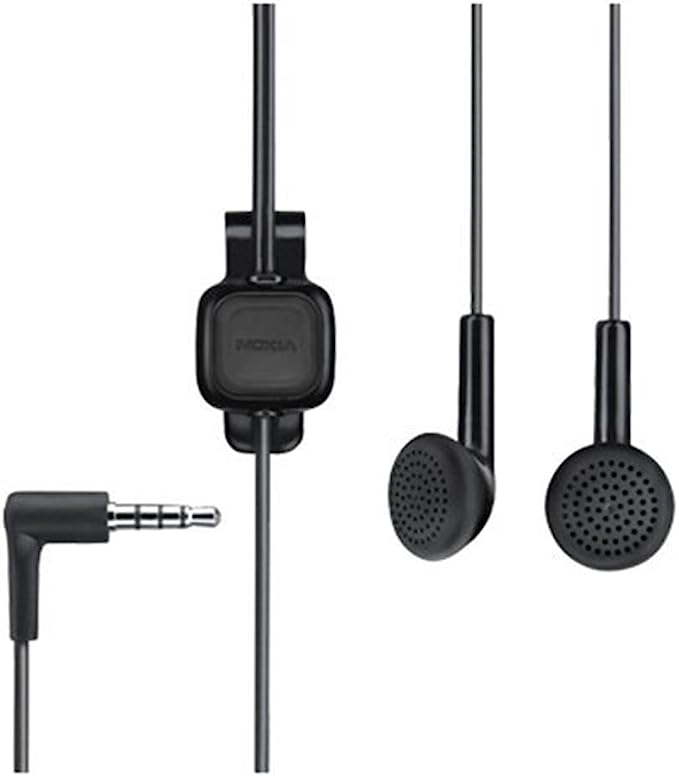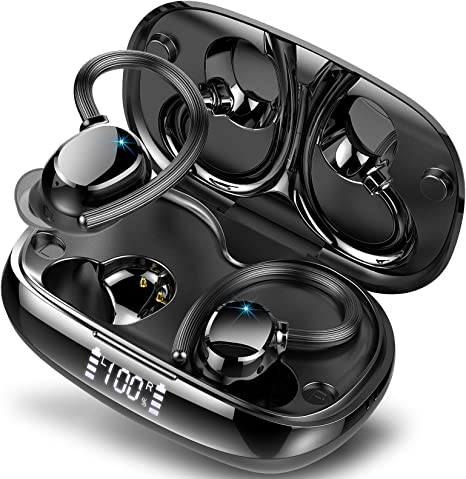There’s a certain tactile satisfaction, almost a ritual, in retrieving a pair of wired earbuds from a pocket or bag, the slight resistance of the cable untangling, culminating in the decisive click as the 3.5mm plug seats into its port. In our current age, dominated by the ethereal convenience of Bluetooth, this act feels increasingly like a nostalgic gesture. Yet, looking back at devices like the Nokia WH-102 In Ear Headset, first gracing the market around 2011, offers more than just a trip down memory lane. It’s an opportunity to appreciate the elegant simplicity of foundational audio technology and the design philosophies of a bygone era. This headset, seemingly basic, is a small vessel carrying whispers of analog signals, the legacy of a universal standard, and the echoes of countless conversations.
The Analog Lifeline: Demystifying the 3.5mm Jack
The cornerstone of the WH-102’s existence is that familiar metallic tip: the 3.5mm audio jack. For decades, this connector was the ubiquitous gateway for personal audio, a testament to the power of standardization. But how does it conjure sound from silence? Its magic lies in the realm of analog electrical signals. Imagine the electrical current flowing through the headphone wire not as discrete digital packets, but as a continuous, fluctuating stream, mirroring the very shape of the sound waves it represents – the rise and fall of a voice, the crescendo of a musical note.
The standard 3.5mm plug, technically known as a TRS (Tip-Ring-Sleeve) connector, is ingeniously designed for stereo sound. Picture its three distinct sections: the Tip typically carries the audio signal for the left ear, the Ring carries the signal for the right ear, and the Sleeve serves as the common ground or return path for the electrical circuit. When plugged in, these segments make precise contact within the device’s jack, allowing two independent channels of information to flow to the headset, creating the spatial soundscape we know as stereo. This simple, yet effective, design made the 3.5mm jack the de facto standard on countless devices, from portable music players to the very Nokia phones the WH-102 was initially paired with (like the venerable 6500 Classic or N85, according to its product information).
However, the world of analog connectors wasn’t entirely static. As mobile phones evolved to handle calls hands-free, the need arose to transmit microphone audio back to the device through the same port. This led to the development of the TRRS (Tip-Ring-Ring-Sleeve) connector, adding an extra segment for the microphone signal. Herein lies a subtle complexity hinted at in user feedback for headsets of this vintage. One user review for the WH-102 mentions needing “some soldering to make them work” with modern smartphones. This likely points to the divergence in TRRS wiring standards – primarily CTIA (Apple standard) and OMTP (older standard, used by Nokia historically). While the WH-102’s original plug might have been TRS or OMTP TRRS, plugging it into a device expecting a different TRRS configuration could lead to compatibility issues, a small technical footnote illustrating how even established standards evolve and sometimes cause friction. The beauty of the original 3.5mm TRS standard, however, was its sheer, uncomplicated universality for stereo listening, a strength the WH-102 leveraged effectively.
A Symphony for Two Ears: The Simplicity of Stereo
Stereo sound is more than just having audio in both ears; it’s about creating dimension. Unlike monophonic sound, which presents a single, flat audio image, stereo uses two distinct channels to replicate how we naturally perceive sound sources in space. Think of listening to an orchestra: stereo allows you to discern the violins slightly to the left, the cellos to the right. The Nokia WH-102, powered by those analog signals delivered through the TRS jack, provided exactly this fundamental stereo experience.
For its intended purpose – listening to FM radio broadcasts on the go, enjoying MP3 tracks stored on the phone, or even catching up on early podcasts – this basic stereo delivery was perfectly adequate. It elevated the listening experience beyond the limitations of a phone’s tiny built-in speaker. However, the product’s user rating (a respectable but not stellar 3.8 out of 5 stars from 406 ratings) and specific comments suggest its limitations, particularly for more discerning music listeners. Reviews mention a lack of bass or a sound profile perhaps not ideal for rich musical immersion, describing the audio as “not the greatest” or “not recommended for music” due to “almost non-existent bass management.” This feedback aligns with what one might expect from a basic, likely cost-optimized headset from that era. The focus was likely on clear delivery of voice frequencies for calls and radio, rather than high-fidelity music reproduction – a common trade-off in bundled or entry-level audio accessories.
Capturing Conversation: The Ingenuity of the Inline Microphone
A key feature elevating the WH-102 beyond simple listening was its integrated microphone, allowing users to take calls hands-free. This tiny marvel of engineering typically resides in a small plastic housing along the cable – the “inline” microphone. How does it capture your voice? Most likely, it employs an Electret Condenser Microphone (ECM) element.
Imagine a minuscule, permanently electrically charged diaphragm inside the microphone capsule. When the sound waves of your voice hit this diaphragm, it vibrates. This vibration changes the distance between the diaphragm and a fixed backplate, altering the electrical capacitance between them. This change in capacitance generates a tiny electrical signal that accurately mirrors the pattern of your voice – another conversion of physical sound energy into an analog electrical signal, ready to be sent back through the TRRS wiring (if applicable, or via dedicated contacts) to the phone.
The brilliance often lies not just in the core technology, but in its thoughtful implementation. Several user reviews specifically praise a small but significant design detail: the clip often found on the microphone module. Comments like “I especially like the clip that lets me attach the microphone to my shirt collar” or “the microphone I always attach to my shirt near my mouth” highlight the practical value of this feature. By allowing the user to position the microphone optimally close to their mouth, the clip significantly improves voice pickup clarity and reduces the intrusion of background noise during calls. It’s a simple, low-cost addition demonstrating sound ergonomic thinking, reinforcing the impression that reliable call quality was a primary design consideration for the WH-102.
Design Philosophy by Ear: The “In-Ear” Form and the Nokia Touch
The Nokia WH-102 adopts the “In Ear” form factor, more commonly known today as earbuds. Unlike larger headphones that enclose or rest upon the entire ear, earbuds sit just inside the concha, the outer bowl of the ear, directing sound towards the opening of the ear canal. This design offers inherent advantages in portability and discreteness – they are lightweight and easily pocketable.
However, this form factor also comes with inherent acoustic characteristics. The seal achieved with the ear is typically less complete than with tightly fitting in-ear monitors (IEMs) or over-ear headphones. Consequently, passive noise isolation – the ability to physically block out ambient sound – is often limited. User feedback seems to corroborate this, with one review noting they are “not recommended in the subway or crowded places as it is not possible to hear very well” and are “not valid for isolating oneself from noisy places.” This suggests the WH-102 likely provided minimal isolation, making them best suited for quieter environments.
Looking beyond the pure acoustics, can we glimpse the broader Nokia design philosophy in the WH-102? Around 2011, Nokia was still a mobile giant, famed for its durable, functional, and often straightforward designs. The WH-102, typically presented in a simple black finish (as per the product information), seems to align with this ethos. It’s an unpretentious tool built for a specific purpose. While sourced user comments don’t extensively detail build quality beyond one user noting it “will last, too — I’m still using the original headset I got four years ago” (if cared for), this hints at the potential for the reliability often associated with Nokia products of that era. It embodies a time when accessories were often seen as functional necessities rather than fashion statements.
When Analog Met the Digital Tide
Synthesizing these elements – the reliable analog connection via the 3.5mm jack, the delivery of basic stereo sound, the functional inline microphone enhanced by a thoughtful clip, and the simple in-ear design – paints a picture of the Nokia WH-102 as a quintessential accessory of its time. It reliably served the core needs of mobile users in the late feature phone and early smartphone era: listening to audio content and, perhaps most importantly, engaging in clear hands-free calls.
Its existence reminds us of the enduring power of standardization. The 3.5mm jack, for all its analog limitations (like susceptibility to electrical interference), provided unparalleled interoperability for decades. The WH-102 represents an era where “plug and play” truly meant just that – no pairing procedures, no battery levels to monitor, just a direct, physical connection carrying the raw language of sound waves translated into electricity.
The digital tide has, of course, largely swept over the analog shore. Wireless technologies offer undeniable freedom, and digital signal processing enables sophisticated audio manipulation. The 3.5mm jack is vanishing from many flagship devices. Yet, the Nokia WH-102, and countless devices like it, stand as quiet monuments to a different approach – one focused on essential function, reliability, and the simple elegance of a well-understood standard. They remind us that sometimes, the most valuable technology isn’t the most complex, but the one that dependably gets the job done, whispering echoes of a slightly simpler, wired world.




